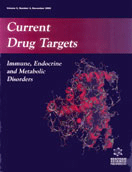Abstract
The mitochondrial pyruvate dehydrogenase complex (PDC) catalyses the oxidative decarboxylation of pyruvate, and links glycolysis to the tricarboxylic acid cycle and ATP production. Adequate flux through PDC is important in tissues with a high ATP requirement, in lipogenic tissues (since it provides cytosolic acetyl-CoA for fatty acid (FA) synthesis), and in generating cytosolic malonyl-CoA, a potent inhibitor of carnitine palmitoyltransferase (CPT I). Conversely, suppression of PDC activity is crucial for glucose conservation when glucose is scarce. This review describes recent advances relating to the control of mammalian PDC activity by phosphorylation (inactivation) and dephosphorylation (activation, reactivation), in particular regulation of PDC by pyruvate dehydrogenase kinase (PDK) which phosphorylates and inactivates PDC. PDK activity is that of a family of four proteins (PDK1-4). PDK2 and PDK4 appear to be expressed in most major tissues and organs of the body, PDK1 appears to be limited to the heart and pancreatic islets, and PDK3 is limited to the kidney, brain and testis. PDK4 is selectively upregulated in the longer term in most tissues and organs in response to starvation and hormonal imbalances such as insulin resistance, diabetes mellitus and hyperthyroidism. Parallel increases in PDK2 and PDK4 expression appear to be restricted to gluconeogenesic tissues, liver and kidney, which take up as well as generate pyruvate. Factors that regulate PDK4 expression include FA oxidation and adequate insulin action. PDK4 is also either a direct or indirect target of peroxisome proliferator-activated receptor (PPAR) α. PPARα deficiency in liver and kidney restricts starvation-induced upregulation of PDK4 however, the role of PPARα in heart and skeletal muscle appears to be more complex. These observations may have important implications for the pharmacological modulation of PDK activity (e.g. use of PPARα activators) for the control of whole-body glucose, lipid and lactate homeostasis in disease states and suggest that therapeutic interventions must be tissue targeted so that whole-body fuel homeostasis is not adversely perturbed.
Keywords: pyruvate dehydrogenase kinase, hyperglycaemia, pyruvate dehydrogenase complex, carnitine palmitoyltransferase inhibitor
 10
10


















